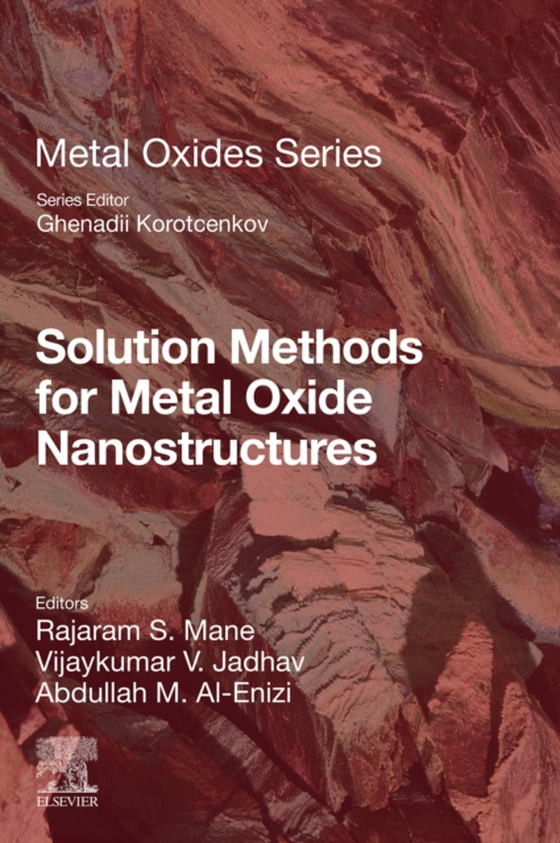
Solution Methods for Metal Oxide Nanostructures e-bog
2190,77 DKK
(inkl. moms 2738,46 DKK)
Solution Methods for Metal Oxide Nanostructures reviews solution processes that are used for synthesizing 1D, 2D and 3D metal oxide nanostructures in either thin film or in powder form for various applications. Wet-chemical synthesis methods deal with chemical reactions in the solution phase using precursors at proper experimental conditions. Wet-chemical synthesis routes offer a high degree of...
E-bog
2190,77 DKK
Forlag
Elsevier
Udgivet
27 juni 2023
Længde
525 sider
Genrer
Metals technology / metallurgy
Sprog
English
Format
pdf
Beskyttelse
LCP
ISBN
9780323853323
Solution Methods for Metal Oxide Nanostructures reviews solution processes that are used for synthesizing 1D, 2D and 3D metal oxide nanostructures in either thin film or in powder form for various applications. Wet-chemical synthesis methods deal with chemical reactions in the solution phase using precursors at proper experimental conditions. Wet-chemical synthesis routes offer a high degree of controllability and reproducibility for 2D nanomaterial fabrication. Solvothermal synthesis, template synthesis, self-assembly, oriented attachment, hot-injection, and interface-mediated synthesis are the main wet-chemical synthesis routes for 2D nanomaterials. Solution Methods for Metal Oxide Nanostructures also addresses the thin film deposition metal oxides nanostructures, which plays a very important role in many areas of chemistry, physics and materials science.Each chapter includes information on a key solution method and their application in the design of metal oxide nanostructured materials with optimized properties for important applications. The pros and cons of the solution method and their significance and future scope is also discussed in each chapter. Readers are provided with the fundamental understanding of the key concepts of solution synthesis methods for fabricating materials and the information needed to help them select the appropriate method for the desired application. Reviews the most relevant wet chemical solution methods for metal oxide nanostructures, including sol-gel, solvothermal, hydrothermal, co-precipitation methods, and more Addresses thin film deposition techniques for metal oxide nanostructures, such as spray-pyrolysis, electrodeposition, spin coating and self-assembly Discusses the pros and cons of each solution method and its significance and future opportunities
 Dansk
Dansk

